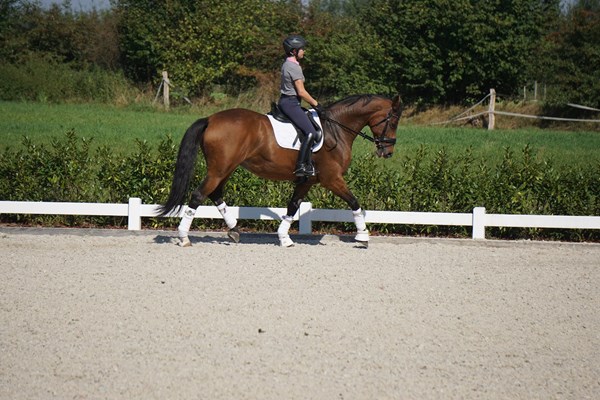The saddle tree is the key to protection of the horse’s and rider’s back and should be designed according to the individual requirements of both equine and human anatomy and physiology. With the industrialization of the trade of saddlery, most people involved in the manufacture of saddles have never ridden a horse and little knowledge of the disciplines saddles are designed for.
Saddle tree design has evolved over centuries yet one principle must be maintained: on the right and left of the horse’s spinal column are 2 saddle support areas of varying size which are connected at the front and back using various structures.
Compared to the more custom or ‘bespoke’ type of saddle making in the last century, today many saddles are mass produced. Individual horse and rider needs are often compromised as saddle templates offer an ‘average’ design for both (the average rider is ‘male’/ the average horse is a squarely built ‘warmblood’ with a well-formed saddle support area). There are only a few saddlers and saddle fitters who understand the complexities involved for a proper saddle fit evaluation. There are a minimum of 36 points of consideration when fitting the saddle to the horse, 25 points of saddle fit to the rider, and 80 points of consideration for a saddler making a custom saddle!
Saddle manufacturers want to be able to offer many models and many types of saddles in order to offer affordable, high quality saddles and ‘something for everyone’. The challenge is finding a saddle which provides optimal fit to horse and rider on an ongoing basis.
Watch video to see and review the many types and designs of saddle trees:
Disposable (Non- adjustable) Saddles
1. Plastic trees – strong, inexpensive to produce, yet form a rigid barrier between horse and rider. Saddles available in average sizes designed for anatomical requirements of male riders. Forward facing tree points can chip off shoulder cartilage during movement. Non-adjustable. Leads to issues in spine and lumbar area.
2. Wooden spring trees – provide some flex during movement; non-adjustable tree (riveted gullet plate and laminated wood tree will break during saddle fit adjustments); forward facing tree points impact scapular cartilage with upward-backward rotation of scapulae.
Non-Disposable (adjustable) Saddles
3. Flex Trees – flex with the lateral movement of the horse; straight tree points provide clearance for scapular movement; Gullet plate can be adjusted to accommodate changes in conformation as horse develops; trees designed for male and female riders available
4. AdapTreeÒ – All the benefits of the flex-tree but with rear-facing tree points; designed with specific seat customization to male and female riders of various anatomical builds.
No rider would consciously want to hurt their horse. However long-term damage to your horse’s back is caused by ill-fitting saddles – from ‘not knowing’, or not having a saddle fit evaluation to horse and rider before buying a saddle.
Various types of saddle trees showing different tree-points orientation.
Top left: Flex Tree with straight tree points
Top right:AdapTreeÒ – flexible polyurethane with rear facing tree –points
Bottom left: laminated wooden English spring-steel showing an English riveted gullet point and forward facing tree points
Bottom right: rigid plastic tree – forward facing or straight tree points

Author of ‘Suffering in Silence – The Saddle fit Link to Physical and Psychological Trauma in Horses’ (2013) Jochen Schleese teaches riders and professionals to recognize saddle fit issues in Saddlefit 4 Life lectures and seminars. We help you find answers in a personal 80 point Saddle Fit Diagnostic Evaluation.
www.SaddlesforWomen.comand Guys too! 1-800-225-2242 www.Saddlefit4life.com











